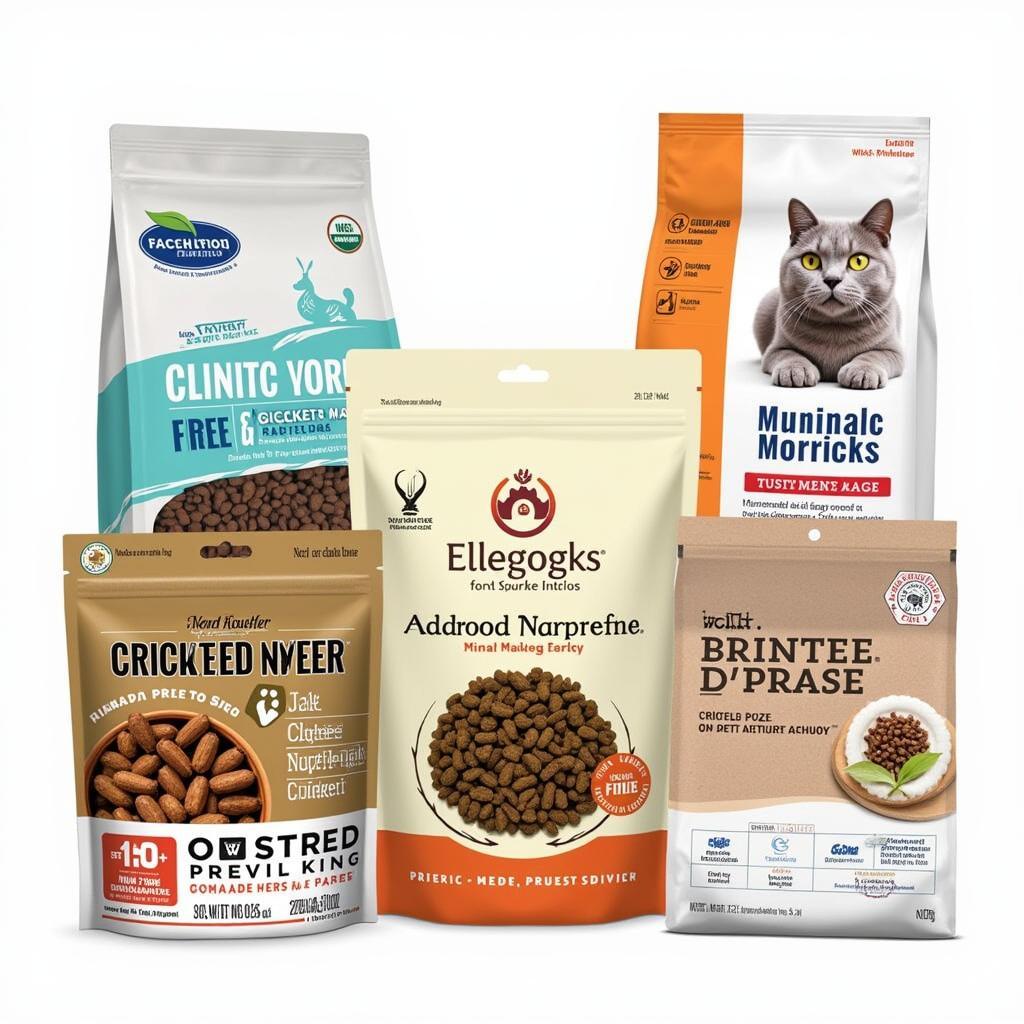Cricket Cat Food is gaining popularity as a sustainable and healthy alternative to traditional cat food. But is it right for your furry companion? This comprehensive guide will explore everything you need to know about cricket-based cat food, from its nutritional benefits to its environmental impact. We’ll delve into the science behind this innovative food source and help you determine if it’s the purrfect choice for your cat.
Are crickets a good source of protein for cats? Absolutely! Crickets are packed with protein, a crucial nutrient for cats’ muscle development, energy levels, and overall health. They also offer essential amino acids, the building blocks of protein, that cats require for optimal bodily functions. In addition to their remarkable protein content, crickets are rich in other vital nutrients. You’ll find they’re a good source of taurine, an amino acid essential for maintaining heart and eye health in cats. Don’t forget the healthy fats! Crickets contain omega-3 and omega-6 fatty acids, which contribute to healthy skin, a shiny coat, and reduced inflammation. What’s even more impressive is that these tiny creatures are a natural source of B vitamins, which play a key role in your cat’s metabolism, nervous system function, and red blood cell production.
Is Cricket Cat Food Environmentally Friendly?
One of the most significant advantages of cricket cat food is its sustainability. Compared to traditional livestock farming, raising crickets requires significantly less land, water, and feed. This reduced environmental footprint makes cricket cat food a more eco-conscious choice for pet owners looking to minimize their impact on the planet. Interested in learning more about feeding wild birds? Check out homemade bluebird food.
How are Crickets Farmed for Cat Food?
Crickets destined for cat food are farmed in controlled environments, ensuring high hygiene standards and minimizing the risk of contamination. They are fed a vegetarian diet, free from hormones and antibiotics, further contributing to the health and safety of the final product. The farming process is also incredibly efficient, allowing for rapid growth and a consistent supply of crickets for cat food production.
Switching Your Cat to Cricket Cat Food
Transitioning your cat to a new food should be done gradually. Start by mixing a small amount of cricket cat food with their current food, slowly increasing the proportion of cricket cat food over several days. This gradual approach helps prevent digestive upset and allows your cat to adjust to the new taste and texture. For more information about fish diets, you can explore bluegill food.
What to Look for When Choosing Cricket Cat Food
Not all cricket cat foods are created equal. Look for brands that use high-quality ingredients and prioritize sustainable farming practices. Check the label for a complete and balanced nutritional profile, ensuring it meets the specific needs of your cat’s age and life stage. Thinking about what to feed your leopard gecko? Check out how long can leopard geckos go without food and water.
Dr. Amelia Carter, a renowned veterinary nutritionist, emphasizes the importance of choosing high-quality cricket cat food: “Crickets offer a complete protein source for cats, but the overall quality of the food depends on the farming practices and other ingredients used. Always prioritize brands that emphasize sustainability and transparency.”
 Variety of cricket cat food brands available on the market
Variety of cricket cat food brands available on the market
Conclusion
Cricket cat food presents a compelling alternative to traditional cat food, offering both nutritional and environmental benefits. Its high protein content, essential nutrients, and sustainable production make it a viable option for health-conscious and eco-minded pet owners. Learn more about bird food options at morning song bird food. By understanding the benefits and considerations of cricket cat food, you can make an informed decision about the best diet for your beloved feline companion. Consider checking out food and odd for more unique food options.
FAQ
- Is cricket cat food hypoallergenic? While not inherently hypoallergenic, cricket protein is less common in commercial pet food, potentially making it a good option for cats with sensitivities to traditional protein sources.
- Do cats like the taste of cricket cat food? Most cats readily accept the taste of cricket cat food, especially when introduced gradually.
- Where can I buy cricket cat food? Cricket cat food is increasingly available in pet stores and online retailers.
- Is cricket cat food more expensive than traditional cat food? Currently, cricket cat food can be slightly more expensive, reflecting the costs associated with sustainable farming practices.
- Can kittens eat cricket cat food? Yes, kitten formulations of cricket cat food are available, providing the necessary nutrients for their growth and development.
- Is cricket cat food complete and balanced? Look for brands that specifically state “complete and balanced” on the label, ensuring the food meets all of your cat’s nutritional requirements.
- Are there any potential downsides to cricket cat food? Some cats may have allergies to crickets, so it’s important to monitor your cat for any adverse reactions.
Common Scenarios:
- Picky eater: Start with a small amount mixed with their current food and gradually increase the proportion.
- Sensitive stomach: Choose a formula designed for sensitive digestion.
- Kitten: Ensure the food is formulated specifically for kittens.
Further Reading:
Are you interested in learning more about specialized diets for other pets? Explore more resources on our website.
Need Help?
For further assistance or inquiries, please contact us:
Phone: 02437655121
Email: minacones@gmail.com
Address: 3PGH+8R9, ĐT70A, thôn Trung, Bắc Từ Liêm, Hà Nội, Việt Nam
Our customer support team is available 24/7.